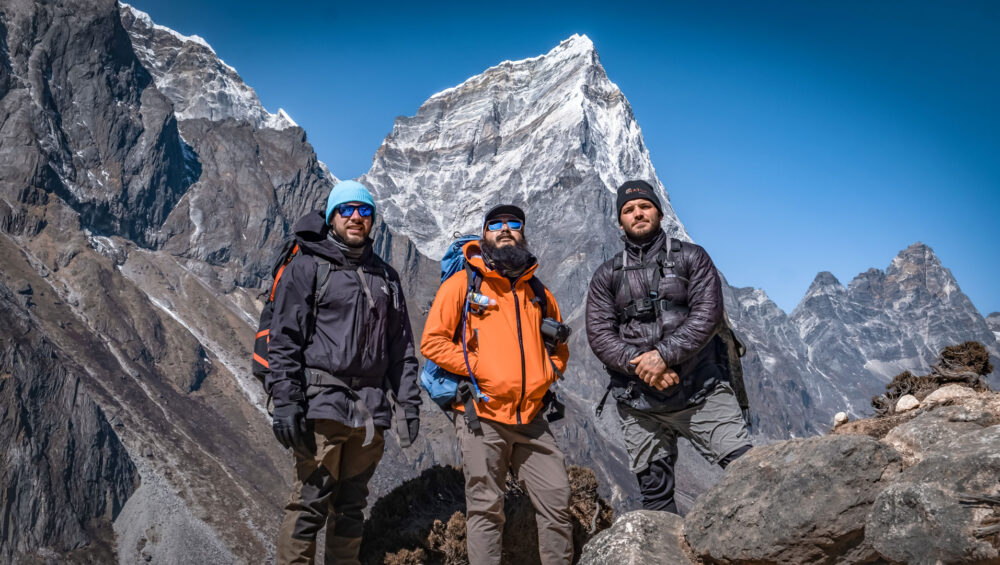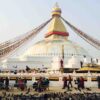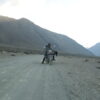Nepal is best known for the mighty Himalayan mountains. Mountain climbing in Nepal is often on the top of the bucket list for many adventure lovers, but the Himalayan nation is diverse in terms of its mesmerizing natural beauty and intriguing cultural aspects. The major attractions of Nepal include mountains and hiking Himalayan trails. One of the world’s most famous trails is the Everest Base Camp Trek in Nepal. Furthermore, Nepal is home to eight among the fourteen 8000m peaks in the world.
Nepal is also prosperous in terms of cultural heritage. It has numerous UNESCO World Heritage Sites, such as the birthplace of Buddha- Lumbini, Kathmandu Durbar Square, Bhaktapur Durbar Square, Swayambhunath Stupa, Sagarmatha National Park, to name a few. Further in the southern plains of Nepal lie dense forests in the Terai plains which are home to many birds, endangered animals, and vegetation. Nepal is also one of the most well-known destinations for adventure sports like water rafting, bungee jumping, skydiving, and many more. Overall, Nepal is a destination that has something for all kinds of travelers.
1. Mount Everest Climbing
Mountains are the main attractions of Nepal, and undoubtedly, the Roof of the World – Mount Everest happens to be the top attraction for adventurous mountaineers and is on the bucket list of adventurers from around the world. Mount Everest Climbing takes summiteers to the highest point on Earth at 8,848m (29,032 feet).

While climbing Everest is possible from both Tibet and Nepal, many mountaineers attempt from the Nepal side due to technical ease. Every year, hundreds of climbers come to Nepal to climb Mount Everest. To climb Everest, mountaineers trek through the Namche bazaar and Sagarmatha National Park to reach the Base Camp at first. The trek gives a closer look at the Himalayan lifestyle and Sherpa culture. After that begins the weeks-long preparation to climb Mount Everest.
2. Mera Peak Climbing
Mera Peak Climbing takes you to the summit of Mera Peak (6,461m/21,190ft), one of the highest trekking peaks in Nepal. It is a popular choice among novice climbers who are not familiar with the technicality of mountain climbing. However, the thrill is equally rewarding.

The route to Mera Peak goes through the famous Zatra La Pass, starting from Lukla airport. The route is filled with beautiful views and culturally eloquent local lifestyle in small villages. After the days-long trek, the summit of Mera peak has the most astonishing views of Himalayan vistas, including five 8000m peaks Everest, Lhotse, Cho Oyu, Makalu, and Kanchenjunga.
3. Everest Base Camp Trek
The Everest Base Camp trek takes you to the foot of Mount Everest at 5600m. Also known as the “Gateway to Everest,” it is one of the most popular treks in the world. The Everest Base camp trek starts at Lukla Airport and can be trekked through various routes.

The trek begins at Lukla Airport and follows the Dudh Koshi River up to Namche Bazaar – a quirky marketplace at the highest elevation. After that, the trek is a few days long up to the Base Camp and passes through places like Syangboche, Tengboche, and Dingboche, with mesmerizing views of Ama Dablam, Lhotse, Everest, and other vistas along the way. The trek is not only about reaching the world’s tallest peak but also about experiencing the Himalayan Buddhist culture and getting a closer look at the life of the world-famous mountain climbers (the Sherpas). Furthermore, the trail lies in the Sagarmatha National Park, which is also a World Heritage Site.
4. Annapurna Base Camp Trek
The Annapurna region in Nepal is one of the most diverse and popular options for trekking. The region has trek options suitable for everyone. Among them, the trek to Annapurna’s base camp at 4130m/13549ft height, is a real treat for trekking enthusiasts. Base Camp has promising views of Annapurna I, Annapurna II, Gangapurna, and Annapurna III.

The Annapurna Base Camp trek has the most well-groomed itineraries among all other trekking routes in Nepal. And that is precisely why it is among the first choice for first-time and solo trekkers. In addition, the trail passes through diverse landscapes and beautiful surroundings with rich mountain vistas, terraced fields, quaint Gurung villages, and a wide variety of flora and fauna.
5. Langtang Valley Trek
The Langtang Valley Trek is one of Nepal’s most promising trekking trails that has a lot to offer. The trail passes through verdant pine and bamboo forests, green farmlands, mountain streams, rugged rock, snow-capped peaks, grassy lawns, and meadows leading to the famous Kyanjin Gompa.

The Langtang Valley, which also goes by the “Valley of Glaciers,” is best known for Mount Langtang, which stands at an elevation of 7,227 meters. Trekkers can see the spectacular mountain views of Dorji Lakpa, Mt. Gaurishanker, Mt. Ganesh, Yala peak, Naya Kanga, and several other vistas throughout the trails. The specialty of Langtang Valley Trek also includes small villages inhabited by Tibetans, Tamangs, and Sherpas.
6. Durbar Squares of Kathmandu Valley
The three Durbar Squares of Kathmandu valley – Patan Durbar Square, Bhaktapur Durbar Square, and Kathmandu Durbar Square – are listed as UNESCO World Heritage Sites for their historical and artistic significance. Each Durbar Square covers a large area with several other monuments in them.
The Kathmandu Durbar Square, also known as Basantapur or Hanumandhoka Durbar Square, features the Taleju Temple, Kumari Bahal, and Bhandarkhal, while the Patan Durbar square has the famous Krishna Mandir. Likewise, Bhaktapur Durbar square has the famous Nyatapola temple, a 55-window palace, and several other architectural wonders. Further, all these Durbar squares also have museums that depict their history.
7. Swayambhunath Stupa
Listed as a UNESCO World Heritage Site, the Swayambhunath Stupa is a major attraction of Nepal. The word “Swayambhu” literally means self-existent, and its history dates back to 460 AD. It is one of the holiest places for Buddhists worldwide. It is also a symbol of harmony between Hinduism and Buddhism as the stupa also includes temples of Hindu deities.
Swayambhunath lies on a small hillock from where you get to see the whole view of Kathmandu city. The stupa is filled with monkeys running around on the entire hillock, so it also goes by the name “The Monkey Temple.”
8. Bouddhanath Stupa
Bouddhanath Stupa in Kathmandu is one of the biggest stupas in the whole world. Built as the Mandala replica of the famous Gyantse Monastery in Tibet, Boudhanath is the main hub of Tibetan lifestyle and culture in Kathmandu. It is also a UNESCO World Heritage Site surrounded by numerous monasteries.
The stupa features the all-seeing-eyes of the Buddha on each side which are the symbols of inner awareness. At ground level, the stupa has 108 meditating images of Gautam Buddha behind the copper prayer wheels.
9. Pashupatinath Temple
Located on the banks of the Bagmati River, Pashupatinath Temple in Kathmandu is the holiest shrine of Hindus. According to legend, the site is believed to have existed since the beginning of the millennium. The main temple is of pagoda-style, carved with exquisite wood carvings with silver roofs. Inside it lies a Shiva lingam.
Every night, a grand aarti ceremony is held on the riverbanks of Bagmati, facing the Pashupatinath, with devotees singing and dancing. On the day of Shivratri, the entire temple is covered with flowers, and the temple is flocked with pilgrims and sadhus.
10. Pokhara- The City of Lakes
Pokhara is the most popular tourist hub in Nepal. The city has eight lakes, including the famous ones like Fewa and Begnas. Pokhara is a dream destination for adventure lovers as it provides plenty of opportunities for paragliding, mountain biking, boating, and sightseeing with panoramic views of the mountain range.
Pokhara is surrounded by many viewpoints, including the famous Peace Pagoda and Sarangkot, from where travelers can enjoy the gorgeous view after short hikes. The city is also the starting point for trekking routes in the Annapurna Region.
11. Chitwan National Park
In the southern plain of Nepal’s Terai region lies a major attraction of Nepal- Chitwan National park. The first National Park of Nepal covers an area of 932 sq. km and is one of the most well-preserved conservation areas in entire Asia.
The national park is home to various kinds of birds and animals, including Asiatic elephants, the endangered one-horned rhinos, and the Royal Bengal Tiger. In Chitwan National Park, visitors can go on a jungle safari to see endangered wildlife and vegetation. In Chitwan, travelers can also observe the tradition of the local Tharu community, who entertain visitors with their traditional stick dance to folk songs.
12. Lumbini – The Birthplace of Gautam Buddha
Lumbini is the birthplace of Gautama Buddha, who was born as the prince of the Shakya dynasty. It is situated in the Kapilvastu district of Terai, the southern plains of Nepal. The birthplace of Buddha is a pilgrimage site for Buddhists and a UNESCO World Heritage Site visited by hundreds of tourists every year.
The main attraction of Lumbini is the Maya Devi Temple, dedicated to Gautam Buddha’s mother. The temple is also believed to be the exact spot where Buddha was born. The holy ground is surrounded by monasteries made by various counties as a sign of respect.
Traveling to Nepal will be a life-changing experience filled with adrenaline, adventure, and eye-opening culture.






